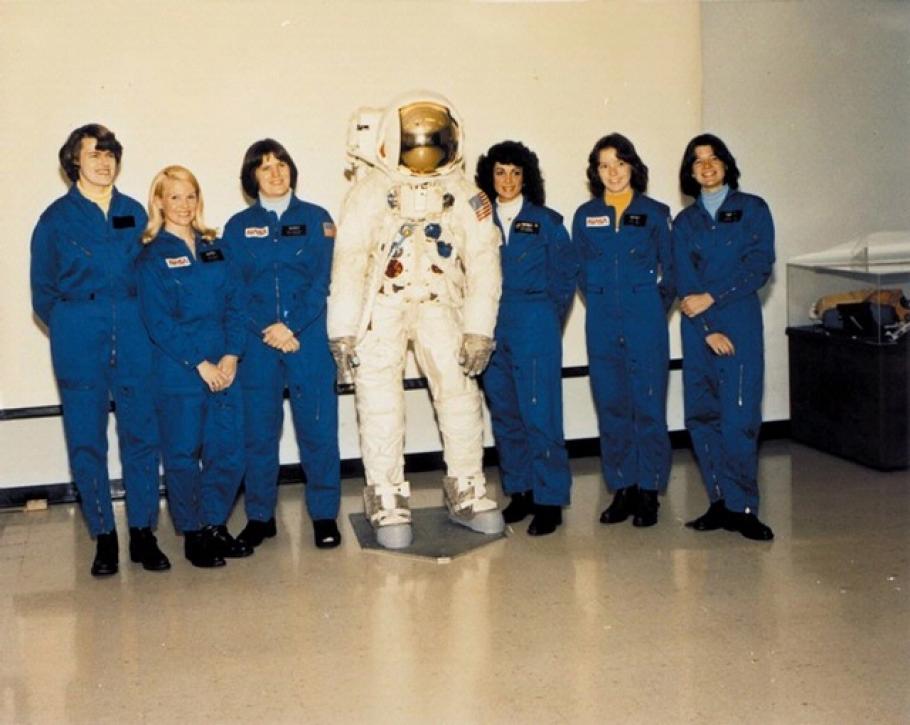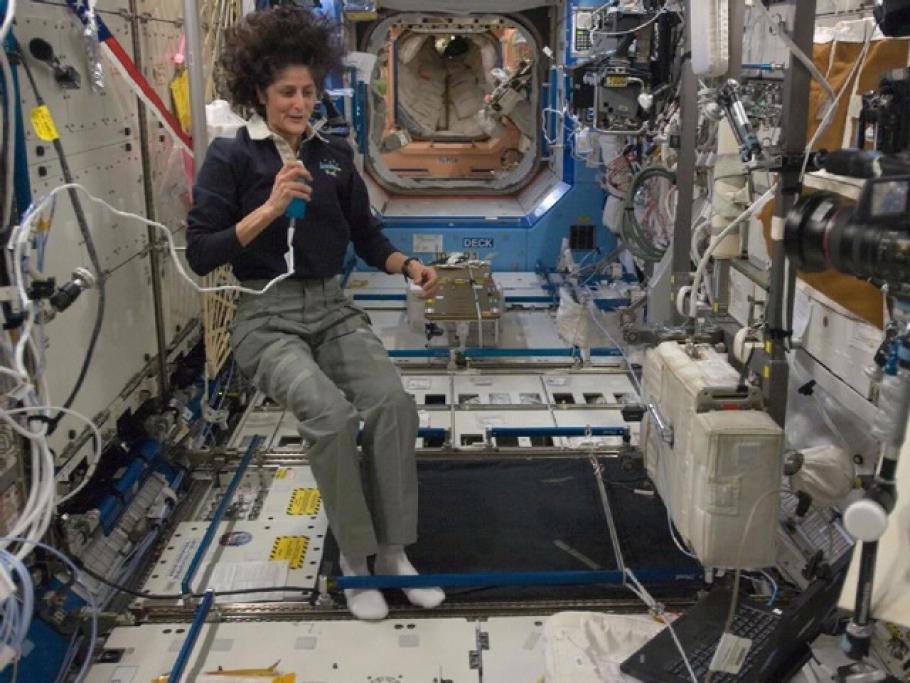Official NASA astronaut portrait of Sally K. Ride (NASA Photo: S84-37256). NASM.2014.0025-bx011-fd010_004
Sally Ride was the first American woman in space. As she became the first American woman in space in June 1983, Sally Ride’s presence on Challenger for the seventh space shuttle mission truly was a ride into history, for it broke the sex barrier in U.S. human spaceflight. Granted, it occurred 20 years after Valentina Tereshkova soared into orbit for the Soviet Union and almost 20 years after the Barbie doll became an astronaut. Yet after that milestone passed, the space shuttle and then the International Space Station became places where women could work alongside men and also take command. The priority of Sally Ride might have been otherwise; any of the six women accepted into the 1978 class of astronauts might have been chosen as the first to fly. Anna Fisher, Shannon Lucid, Judith Resnik, Sally Ride, Rhea Seddon, and Kathryn Sullivan completed training and qualified for flight assignments together. All flew in space within two years. These six women navigated together through the ways of an all-male astronaut corps.
Yet, by flying first, Sally Ride represented all of them and inspired others to come. These first women had already embarked on careers as scientists—four with PhDs and two with MDs—in fields dominated by men. In their wake, 41 more U.S. women became astronauts, accounting for almost 20% of the 256 astronauts selected for the shuttle-space station era and including women of African-American, Hispanic, and East Indian descent. Countless more girls and women began to imagine themselves in those roles. Women piloted or commanded nine shuttle missions and, thus far, two space station expeditions. Women set long-duration records in space, conducted laboratory research, and helped build the space station. Astronaut Sunita “Suni” Williams is the world’s leading female spacewalker and ranks near the top among American spacewalkers.
Thirty years after Ride’s historic flight, the active U.S. astronaut corps has shrunk to 49 members, of whom 12 are women, the highest percentage yet. Seven other women astronauts are serving in NASA management positions. This week NASA announced its twenty-first class of astronaut candidates—eight selected from more than 6,000 applicants—and for the first time there is an equal balance of four women and four men. These numbers attest to the growing presence of U.S. women in space, joined by female astronauts from Europe, Canada, Japan, and most recently China. Even more, they hint at the increase in numbers of women qualified as scientists, engineers, and pilots who can compete for and earn their place in space. Although NASA’s selection of female candidates in 1978 and Sally Ride’s first flight in 1983 opened the door for more women to become astronauts, the greater effect has been to model science and engineering as pursuits for ambitious young women. Ride admitted that she had always loved and done well in science, long before she aspired to be an astronaut. With a strong academic and professional record in science, she and many other women were ready for the opportunity of spaceflight. To reinforce the importance of competence in science, after leaving NASA, Ride devoted more than 20 years to science education, teaching at the university level and also encouraging younger people, especially girls, to develop their curiosity and knowledge. The programs and products developed by her namesake company, Sally Ride Science, aim to stimulate a lasting interest, if not passion, for science that may prepare youngsters to achieve their dreams in space or elsewhere. Accomplished American women have flown in space since 1983, and more are preparing to follow them into the future. Inspiration continues to flow from Sally Ride the astronaut and Sally Ride the educator. That legacy is the real result of her first six days in space.


